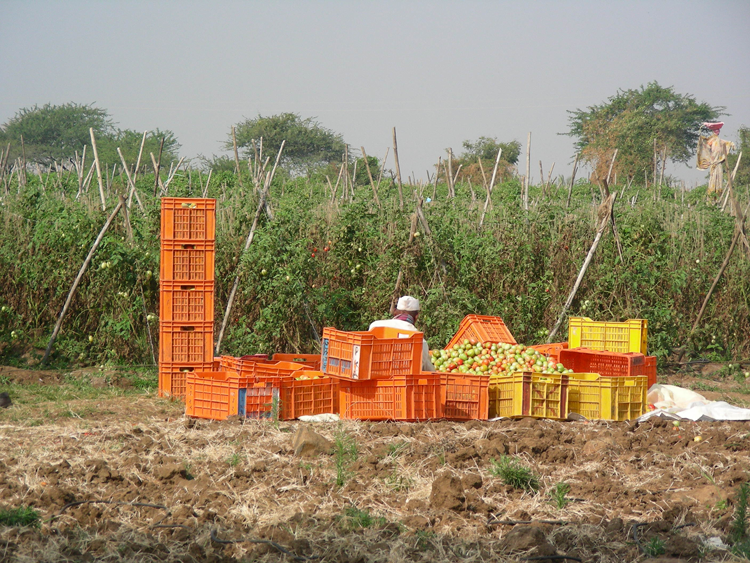A Decision Framework for Post-Harvest Loss Reduction
The 10-minute video, “A Decision Framework for Post-Harvest Loss Reduction“, was presented at the 3rd All Africa Postharvest Conference and Exhibition, September 14, 2021. The article below provides background and a brief overview of the video’s contents.

Steve Sonka1and Micah Pope2
1 Ed Snider Center for Enterprise and Markets, University of Maryland, 4568 Van Munching Hall, College Park, MD, USA 20742
ssonka21@gmail.com
2 Centrec Consulting Group, 3 College Park Ct, Savoy, Illinois, USA 61874
mpope@centrec.com
In a world where more than 700 million people suffer from food insecurity and caloric deficiency, excessive post-harvest loss (PHL) is a missed opportunity to use food already available to reduce hunger, while increasing food quality/safety, nutrition, and market opportunities. While the magnitude of loss today is concerning, it is even more distressing that excessive PHL and its associated negative impacts are NOT new topics of global interest. In 1975, then US Secretary of State, Henry Kissinger, detailed the need for global efforts to reduce PHL at a United Nations conference on food security. Following his exhortation, the UN General Assembly adopted a resolution calling for at least a 50 percent reduction within ten years. However, we still struggle to mitigate PHL of both cereals and perishables.
The purpose of this paper is to present an alternative decision framework to the prevalent notion that simply documenting the extent of loss will drive effective interventions to reduce PHL. A case example is provided illustrating application of the framework in the actual context of the Iringa Hope cooperative in Tanzania (Home - Iringa Hope). This decision framework focuses on documenting the costs and benefits of specific interventions. As noted by the Pontifical Academy of Sciences (2019), “while FLAW (food loss and waste) reduction has huge benefits, the costs of action cannot be ignored when aiming for effective and efficient solutions”.
A corollary factor relates to the adequacy of information for decision-making purposes. While better accuracy is desirable, agri-food system managers and farmers must make timely decisions. As noted by Bradshaw (2019), “actionable insights are the holy grail of any business’ data”. Given the sparse nature of available data on PHL, emphasizing methods that can provide timely insights at low cost is an important goal. This concept is central to the decision approach illustrated in the work described here.
The featured case study compares a “base case” (use of practices traditional in the region) with interventions that Iringa Hope is evaluating and implementing. To replicate an actual decision setting, parameter values based upon the experience and expertise of Iringa Hope leaders and managers are extensively employed. While often informed and influenced by applied research findings, decision maker judgement will determine decisions and actions actually enacted.
The results presented in the video examine the effects of key interventions that have the potential to materially reduce loss. Extensive use of hermetic storage bags (both for totally subsistence farmers and for those who sell part of their production in commercial channels) is one key intervention. A key implication detailed in the video is that even effective post-harvest technologies can have limited impact unless effectively paired with corollary innovations.
Iringa Hope is in the process of introducing and scaling the use of a number of innovations with its members. Interventions of particular relevance to this discussion are use of hermetic storage bags, improved agronomic practices, and an innovative harvest loan program so that farmers aren’t forced to sell grain when prices are low. While the economic effects of individual innovations are positive, the overall impact can be limited. However, the joint effect of those three innovations can provide profound economic gains.
While the parameter estimates are interesting, a major purpose of the research described in the video is to illustrate operationally a framework designed to enable decision makers to preview and assess post-harvest management innovations.
Acknowledgements
We wish to acknowledge the contributions of Iringa Hope Leaders as well as colleagues at the Centrec Consulting Group, the Ed Snider Center for Enterprise and Markets, and the Consortium for Innovation in Post-Harvest Loss and Food Waste Reduction
A portion of the financial support for this work was provided by the Rockefeller Foundation and the Foundation for Food and Agricultural Research
